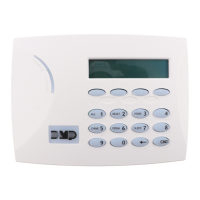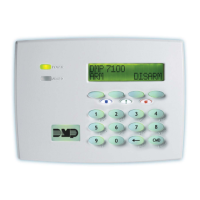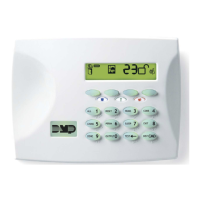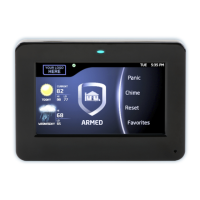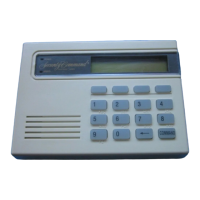
Do you have a question about the DMP Electronics Thinline 7070 and is the answer not in the manual?
| Brand | DMP Electronics |
|---|---|
| Model | Thinline 7070 |
| Category | Keypad |
| Language | English |
Steps to separate the keypad front from its base.
Explains wire colors and connections to the keypad bus and panel.
Power supply options and keypad bus monitoring for fire systems.
Internal/external readers, Wiegand input, and door strike relay specs.
Wiring diagram for external card readers on specific keypads.
Installation of the suppressor across the 5-wire harness.
Soft-Shunt for Zone 2 and Request to Exit for Zone 3.
Configuring 2-button and 7/0 panic key functions.
Operation of the internal speaker and keypad backlighting.
Adjusting LCD brightness, speaker tone, and volume.
Viewing keypad model, firmware, and address.
Method for entering letters using the keypad.
Method for entering symbols and spaces.
Setting the keypad address and operational mode (Supervised/Unsupervised).
Overview of programmable keypad options.
Setting a custom message for the keypad display.
Enabling 2-button and 7/0 panic key functions.
Enabling the Soft-Shunt option for door contacts on Zone 2.
Setting the duration for the Soft-Shunt feature.
Configuring relay behavior when Zone 2 faults occur.
Enabling REX feature for Zone 3 access control.
Setting delays for arming/disarming operations.
Selecting DMP or CUSTOM credentials for access.
Defining the total number of bits in a Wiegand code.
Specifying the start position and length of the site code.
Defining the start position and length of the user code.
Enabling site code verification for access.
Entering and managing site codes for access control.
Entering and managing additional site codes.
Setting the expected length of user codes for panels.
Configuring relay actions when communication with the panel is lost.
Testing display segments, backlighting, and individual keys.
Testing zone status and Wiegand reader input.
How to arm or disarm individual areas using a card or code.
Arming/disarming all areas or the perimeter system.
How the door strike relay activates during arming/disarming.
Understanding and responding to entry delay tones.
Recommended wire types, lengths, and device limits for bus circuits.
Managing voltage drop and using auxiliary power supplies.
Operating voltage, dimensions, and panel compatibility.
UL listings and FCC IDs for RFID readers.
Available backboxes, wiring harnesses, and proximity credentials.

